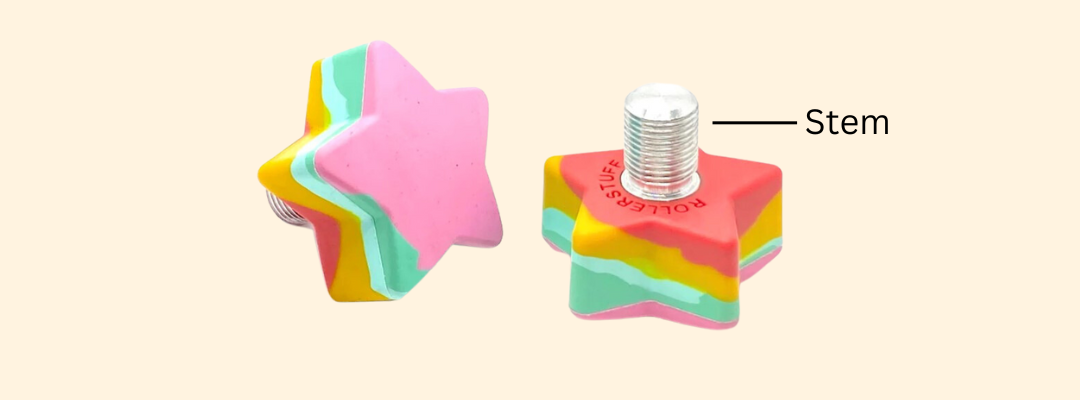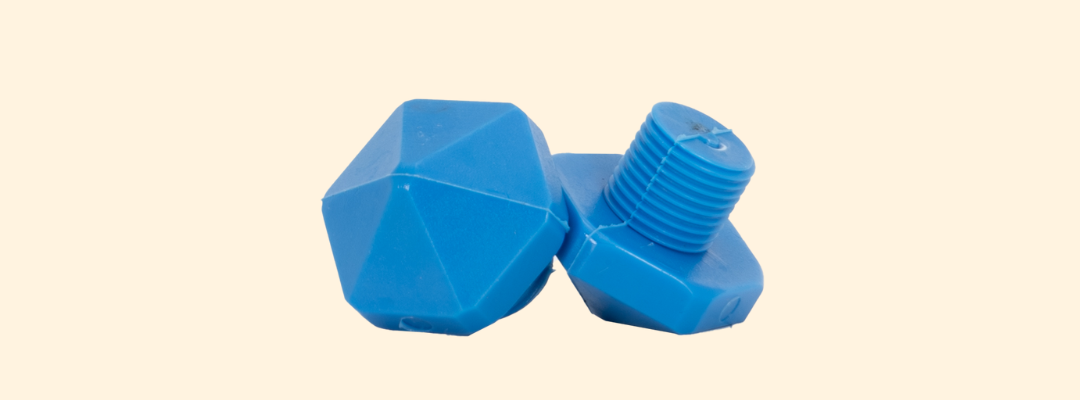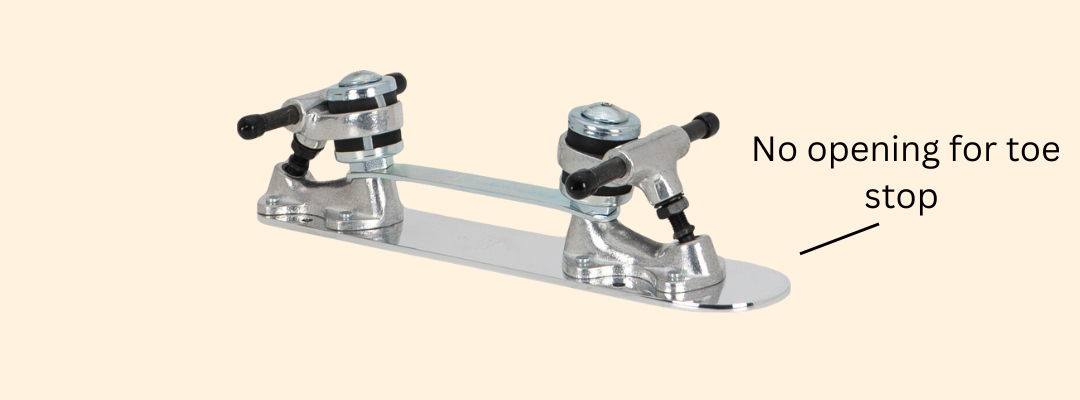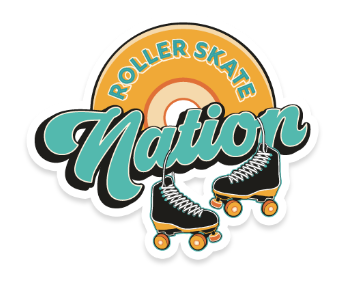Toe Stops
Toe stops are generally found on the front of both quad (roller) skates, while recreational inline skates will have a brake on the back of one skate.
Toe stops are designed to slow down while roller skating. In some styles of skating they will also be used for faster take offs. There are two versions of toe stops; fixed or adjustable.
Fixed or "bolt on" toe stops are attached to the roller skate plates and cannot be adjusted in terms of height or positioning. They are a common feature on beginner and recreational roller skates. Fixed toe stops offer simplicity and stability, making them suitable for those who are just getting started with roller skating. However, they may not provide the versatility and customization that advanced skaters often require. They can be rotated 1/4 - 1/2 turn to maximize wear.
Fixed toe stops come in different shapes, sizes and colors. They are always made with a small hole in the center where a bolt or screw is inserted to connect directly to the plate. Fixed toe stops do not have a stem, so unlike adjustable toe stops, they stay put where they are.
Plates that are compatible with fixed toe stops will have a 5/16” toe stop housing.
Example of a fixed toe stop:

Adjustable toe stops, as the name suggests, can be customized to suit your specific skating style and preferences. They are typically attached to the skate plates using a bolt (or "stem") and nut system, which allows you to change the height and angle of the toe stop. This adjustability offers several advantages:
a. Height Adjustment: Adjustable toe stops come in two main stem lengths: short stem and long stem. The choice between these two lengths depends on your skating style. Long stem toe stops are closer to the ground (such as 30mm), offering better stability and agility, making them popular among derby skaters and aggressive skaters. Short stem toe stops (such as 18mm), on the other hand, provide more ground clearance, which is preferred by artistic and rhythm skaters for intricate footwork. If you want a toe stop with a stem length somewhere in the middle, aim for around 25mm.
b. Angle Adjustment (only horseshoe shaped toe stops): Another benefit of some adjustable toe stops is the ability to adjust the angle at which the toe stop contacts the ground. This allows skaters to fine-tune their stopping power and control, making it easier to perform quick stops or controlled slides. This is only possible with horseshoe shaped toe stops such as the Sure Grip Gripper and Sure Grip Mini Gripper sold on our website.
Plates that are compatible with adjustable toe stops will have a 5/8” toe stop housing.
Example of an adjustable toe stop:

Stopless Options
Jam plugs or Skate Plugs are used by skaters who do not need a toe stop. Skate plugs are small, round, rubber or plastic stoppers that can be inserted into the toe stop holes on roller skate plates. They offer a flush and smooth surface, eliminating the protruding toe stops altogether. They are not designed to be used for slowing down or stopping roller skates. They are very small and designed to simply plug the hole where a toe stop would normally go. Most skates have a metal housing for the toe stops to be screwed into. If you do not plug that hole, the metal housing makes contact with a skating rink floor and can cause damage.
Skaters who focus on intricate footwork and dance moves often prefer the uninterrupted flow provided by skate plugs, as they eliminate the risk of accidentally hitting or tripping over traditional toe stops. They are also used to preform tricks and do certain maneuvers on skates.
Jam plugs can be found for both 5/16" and 5/8" toe stop housing, so you can use them with plates designed for fixed or adjustable toe stops.
Example of roller skate jam plugs:

Stopless plates have no toe stop opening (referred to as "housing"). These plates are for skaters who never want to use a toe stop, and therefore have no need for toe stop housing. It gives their skates a clean look because they do not need a jam plug to fill in the toe stop housing most plates have.



